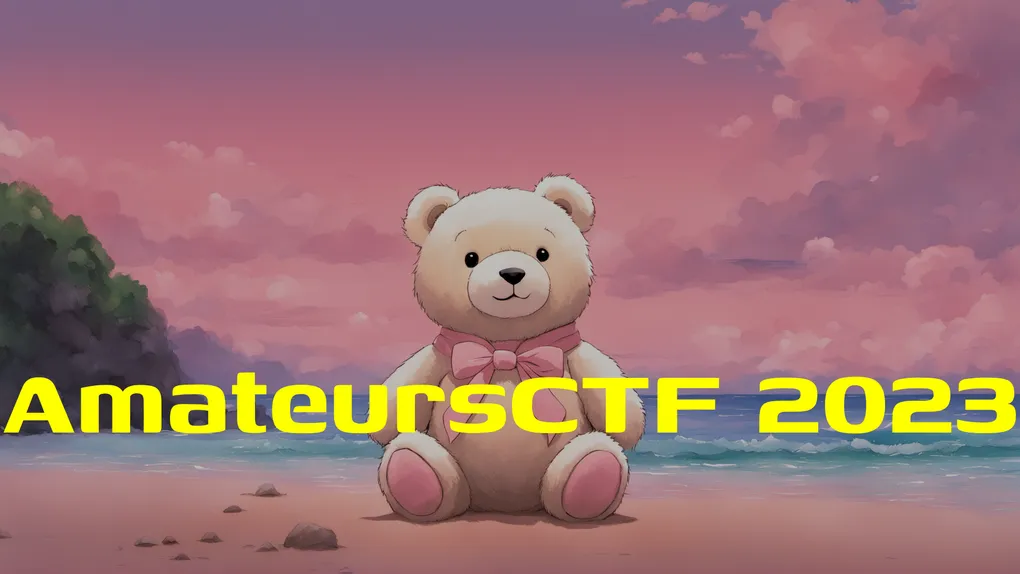
AmateursCTF 2023
Challenge Archive
The challenges from AmateursCTF 2023 are available at the above github repository. Solve scripts, and associated statistics (solves, point values, scoreboard) are available in the repository.
Context
During the summer of 2023, I organized the first edition of AmateursCTF, a capture the flag competition aimed at beginners to the cybersecurity space. We had nearly 1000 teams that solved at least one challenge, and a great deal of positive feedback from the community. As I’m currently preparing to organize the second edition of AmateursCTF, I thought it would be a good idea to look back on the first edition and see what went well, and what could be improved.
Logistics and Infrastructure
Feedback Survey Analysis
At the end of the competition, we sent out a feedback survey to all the participants. We received over 200 responses, and I’ve included some graphics below to summarize the results.
Demographics
We can see that the majority of participants were either in High School or College/University, which was no surprise to me as the competition was advertised to be beginner friendly. 12.6% worked in the cybersecurity industry, which was a bit higher than I expected. I was also surprised to see some of the other responses, such as how some participants were working in other disciplines that were not related to cybersecurity, like management or finance.
We also have a wide variety of experience levels, with some dedicated CTF players, some who played occasionally, and some who had never played before.
Challenges
We see that most people liked the challenges, and felt that the infrastructure was pretty stable. I’m also surprised that the majority of people felt like we had the right amount of challenges, as the organizing team and myself felt like we had too many challenges (we wrote over 50 challenges), but this might have been compensated by the fact that contestants had five days to solve them.
Overall Experience
These next two graphics show the overall experience of the participants. They are both on a scale of 1-10.
For this first chart, one means “Very Easy”, and ten means “Very Difficult”.
For this second chart, one means “Definitely Not”, and ten means “Definitely Yes”.
For the first chart, we can see that the majority of participants found the challenges to be at around a 6-7 difficulty level, which was what we were aiming for. We wanted to make sure that the challenges were hard enough so that people would learn something, but not so hard that they would get discouraged and give up.
For the second chart, we can see that the majority of participants would play again, and as thus we can consider the competition to be a success.